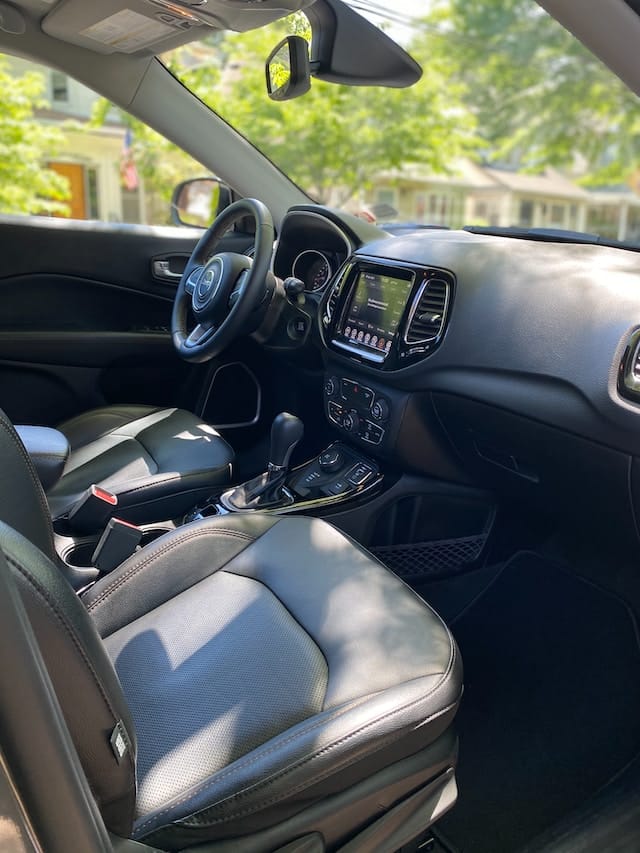
Chewing gum is a popular habit, but it can quickly turn into a sticky mess when it ends up on your car seat. If you’ve been in a sticky predicament, you know the struggle of getting gum out of car seats. But don’t worry, we’ve got you covered with some efficient methods to tackle this problem.
How to Get Gum Out of Car Seats: Main Takeaways
| Material | Method | Materials Needed | Instructions | Disclaimer |
|---|---|---|---|---|
| Fabric Seats | Ice Cube | Ice cubes, Plastic bag, Plastic card/Putty knife | Place ice in bag on gum until hard, then scrape off. | Be gentle to avoid tearing the fabric. |
| Leather Seats | Olive Oil | Olive oil, Soft cloth | Apply olive oil, wait a few minutes, then gently roll off the gum. | Use sparingly to avoid oil stains and test on inconspicuous area first. |
| Vinyl Seats | White Vinegar Solution | White vinegar, Liquid dish soap, Warm water, Soft cloth | Apply vinegar solution, wait, then wipe or scrape off. | Do not oversaturate to prevent seepage into cushioning. |
How to Get Gum Out of Car seat? Addressing the Sticky Situation

Chewing gum, with its malleable, adhesive base, can become a stubborn fixture on fabric, leather, or vinyl car seats. Whether it’s an accident of sitting on gum or a careless discard, once gum has bonded with the seat material, it poses a removal challenge, especially when it hardens over time.
Ready, Set, Prep
Before tackling the gum issue, assemble your toolkit. You’ll need items such as ice cubes, olive oil, white vinegar, and a soft cloth, depending on the type of seat and the method chosen. Commercial products like WD-40 can also be useful, but they’re typically not recommended for leather seats. For the actual removal, have on hand tools like a plastic card or a putty knife for scraping, tweezers for picking, and rubber gloves to keep your hands clean.
Removing Gum from Car Upholstery

Here’s a rundown of specific methods tailored to different car seat materials:
Fabric Seats
- Employ the ice cube technique. Place it in a plastic bag and press it against the gum until it solidifies, then gently scrape it away with a plastic card or putty knife.
- Clean the affected area with a mixture of soap and water to remove any residue.
Leather Seats
- Opt for a dab of olive oil. Apply it to the gum, wait for it to loosen the grip, and then carefully roll the gum off the surface.
- It’s crucial to use the olive oil sparingly to prevent oily stains and to test it on an inconspicuous area first to avoid damage.
Vinyl Seats
- Create a vinegar solution mix. Combine white vinegar, liquid dish soap, and warm water, apply it to the gum, and after a few minutes, scrape the gum off with a scraper or tweezers.
- Wipe the area with a dry cloth to mop up any remaining dampness.
Vinegar comes to the rescue again for vinyl. Let the vinegar solution sit on the gum before removing it with a scraper. If any stickiness persists, WD-40 can be used as an alternative. Spray it onto the gum, let it work its magic, and then wipe it away with a cloth.
Identifying Your Car Seat Material: Fabric vs. Vinyl
The distinction between fabric and vinyl car seats is important not only for aesthetic and comfort reasons but also for maintenance and cleaning procedures, like removing gum. Here’s how to differentiate between the two:
Fabric Seats
- Texture: Fabric seats are softer to the touch and may have a textured, cloth-like feel. They are often woven and can have a pattern or weave that is visible to the naked eye.
- Breathability: Fabric tends to be more breathable, which means it’s less likely to feel hot in the summer or cold in the winter compared to vinyl.
- Absorption: If you spill water on fabric seats, they will absorb the liquid, whereas vinyl will not.
- Stretch: Fabric seats have some give and can stretch slightly under pressure.
Vinyl Seats
- Texture: Vinyl has a smoother, often slightly shiny surface. It feels more plastic-like and is less likely to feature a woven pattern.
- Temperature Sensitivity: Vinyl seats can feel sticky in hot weather and cold in lower temperatures.
- Water Resistance: Vinyl is non-porous, so water will bead on the surface instead of soaking in.
- Elasticity: Vinyl is less stretchy than fabric and more likely to retain its shape when pressed or pulled.
Quick Tests to Determine the Material
- The Water Test: Drip a small amount of water on an inconspicuous area of the seat. If it absorbs, it’s fabric. If it beads up, it’s more likely to be vinyl.
- The Touch Test: Run your hand over the seat. Fabric will feel similar to clothing material, whereas vinyl will feel like a plastic tablecloth.
- The Stretch Test: Gently pull on a non-visible area of the seat. If there’s some elasticity, it’s likely fabric. Vinyl will feel firmer and less yielding.
- The Visual Test: Look closely at the seat for the presence of pores or a woven pattern. Fabric will typically show some sort of weave, while vinyl will appear poreless and uniform.
Before you start removing gum from your car seat, it’s crucial to identify the material correctly to choose the most effective and safe cleaning method.
Concluding Thoughts
Tackling gum on your car seats can be a sticky affair, but with these materials and methods, you’re well-equipped to handle the task. Quick action and a gentle hand are your best allies in preserving the integrity of your car seats, leaving your vehicle pristine and welcoming.


